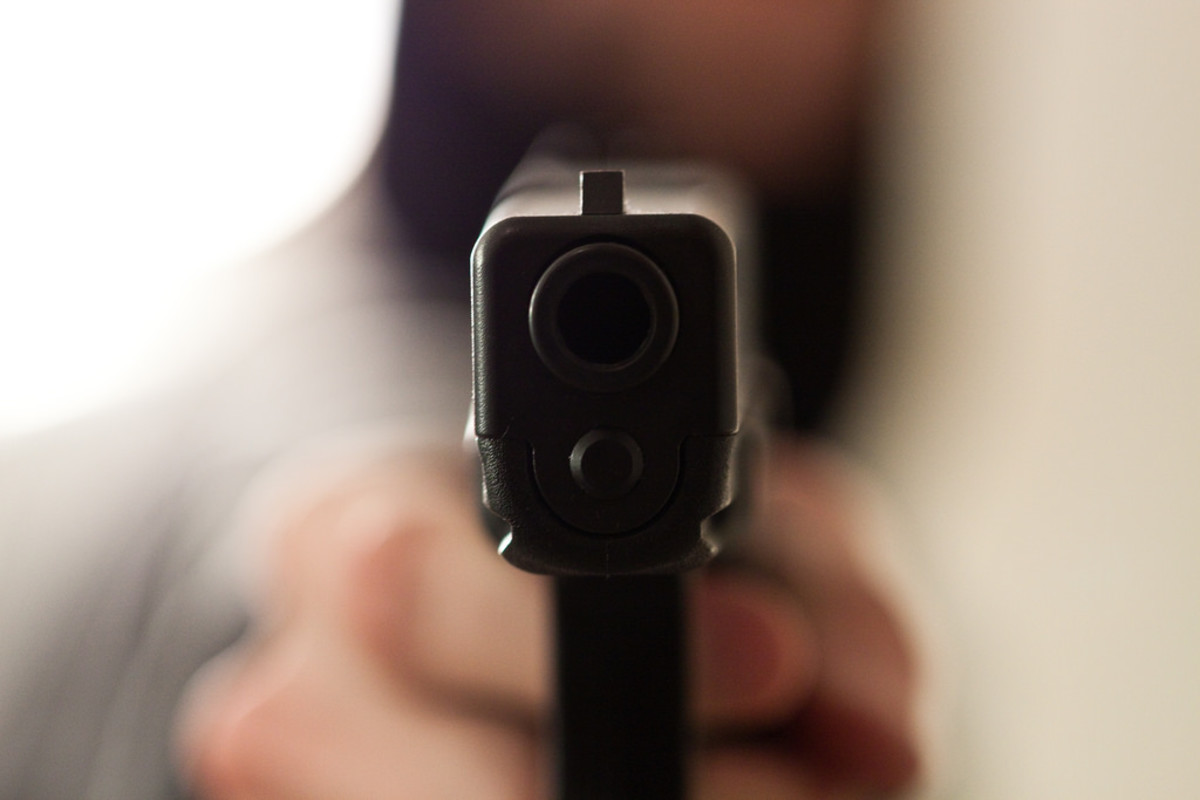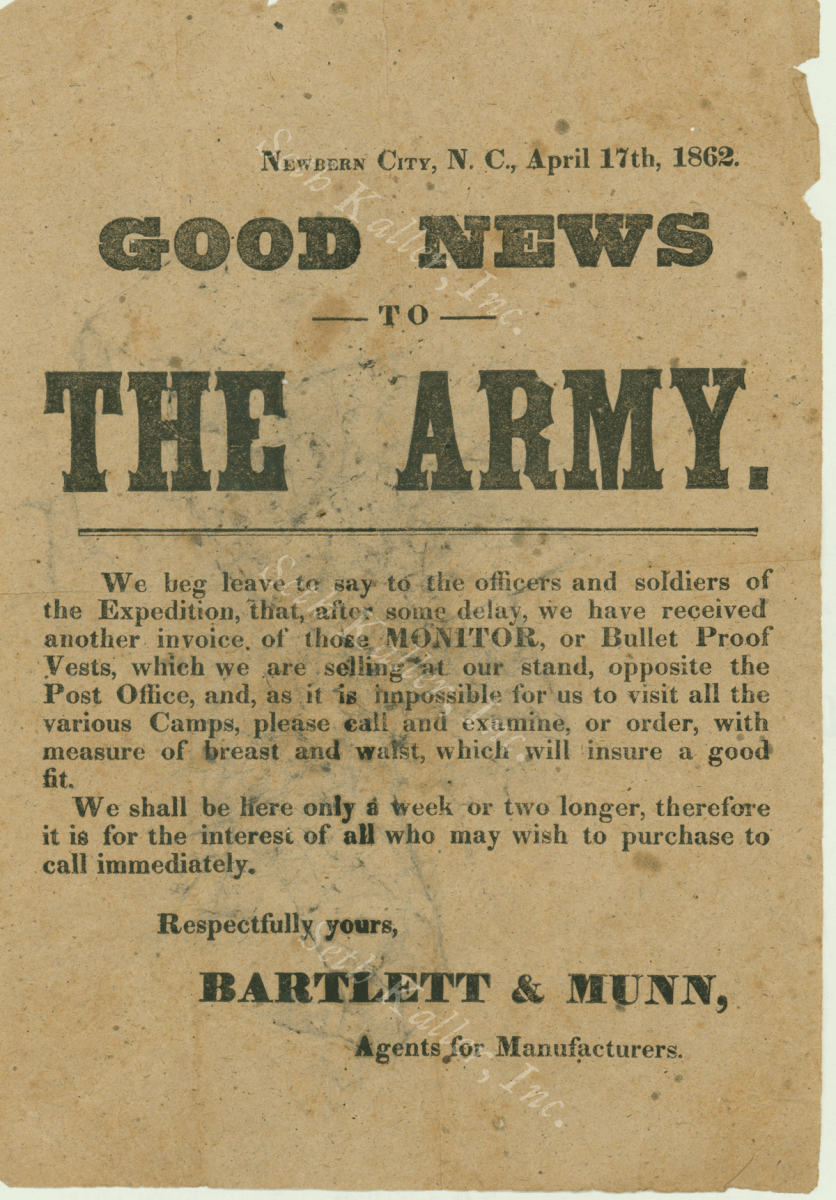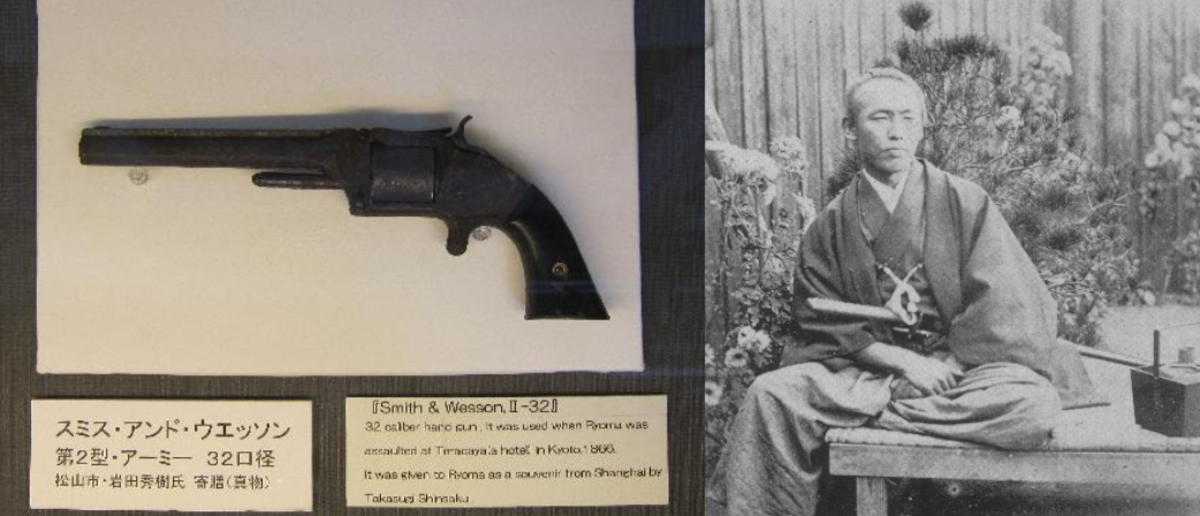LeMat Revolver

The LeMat Revolver - an introduction to Paul LeMat and his pistol
The Lemat revolver is a 19th Century weapon invented by a doctor in New Orleans. This revolver was employed during the American Civil War by such notables as Jeb Stuart and General Pierre G.T. Beauregard.
Unfortunately, due to the elaborate mechanism and complex engineering involved in this revolver's production, only about 3000 LeMat revolvers were produced.
Fortunately for Civil War reenactors and black powder firearms enthusiasts, the Pietta company of Italy creates modern reproductions of the LeMat revolver.

How is the LeMat Revolver different?
LeMat: rare, expensive -- and powerful!
The LeMat revolver is similar to the standard black-powder sidearms of the time in several ways. The LeMat is classed as a "horse pistol" (meaning it was big enough and heavy enough that a soldier tended to leave it in his saddle sheath rather than carry the revolver on his belt). The revolving action featured a 9-shot cylinder of a variety of calibers.
What really set the LeMat apart from the Remington and Colt revolving pistols of the time was the second barrel. The LeMat revolver boasted a smoothbore shotgun barrel under the primary rifled pistol barrel. The shotgun barrel was a 16-gauge (later a much smaller 28-gauge) weapon capable of delivering a devastating spray of buckshot during close combat.
Additionally, the LeMat Revolver was incredibly rare during its own time. Less than 3000 examples of this powerful and unusual sidearm were produced. Manufacturers ranged from John Krider of Philadelphia to Charles Frederic Girard and Son of Paris and the Birmingham Small Arms Company of Birmingham, England.
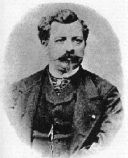
About Dr. Paul LeMat
The man behind the revolver
Dr. Jean Alexandre Francois LeMat was born in 1824. He was a physician. He emigrated from France to New Orleans and was given the courtesy title of "Colonel," like most Southern gentlemen of the time.
In 1856, he applied for and was granted Patent #15925 for his revolving pistol/single barrel shotgun now known as the LeMat revolver. He even applied for British patents which were issued in 1859.
LeMat manufactured about 300 of these revolvers before the war. They earned a reputation for reliability and quality.
In addition to the LeMat revolver, the good doctor designed a rifle with the same concept. This was even less popular than his revolver (of which fewer than 3000 were manufactured).
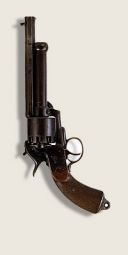
History of the LeMat revolver
Dr. Paul LeMat invented his famous revolver just before the beginning of the American Civil War. He hoped its large capacity and potent shotgun option would make it the primary sidearm for dragoons and cavalrymen.
Dr. LeMat applied for a patent in 1859, but his revolver was already being produced by John Krider of Philadelphia starting in 1856. In April of 1859, Dr. LeMat's father-in-law General Beauregarde aided him in selling his revolver to the Army.
When the Civil War broke out, the Confederate government contracted for some 5000 LeMat revolvers for delivery. The Confederate states did not have facilities for the creation of the LeMat on their own. Dr. LeMat arranged for the production of his revolver in foreign countries for import into the Confederacy. Scholars estimate that some 2500 LeMat revolvers were smuggled through the Union blockade into service into the Confederacy.
The LeMat revolver was manufactured from 1856 to 1865, with approximately 5,000-10,000 being produced. The first models were manufactured by , with the second model (the first overseas model), being produced by Charles Frederic Girard and Son of Paris. Quality concerns prompted LeMat to investigate production at the Birmingham Small Arms Company in Birmingham, England, but this was not proceeded with. However, LeMat revolvers from France were shipped to the Confederate forces via the United Kingdom, and all firearms landed in the UK were (and still are) required to be proofed. The LeMats which found their way through the Union blockade were stamped with British proof marks from the Birmingham Proof House, leading to the misapprehension that the pistols were actually manufactured in the UK. Having said that, a handful are known to have been made in the UK by an unknown manufacturer, believed to be the London Armoury Company, but only two examples survive to the present day and it is doubtful any of the English-made LeMats ever saw service during the U.S. Civil War.
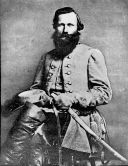
Who used the LeMat Revolver?
A rogue's gallery -- or a collection of heroes!
Because the LeMat revolver was invented in New Orleans, Louisiana and manufactured in France and England (Confederate sympathizers during the American Civil War), the LeMat was deployed almost exclusively by Confederate forces.
Famous men who used the LeMat revolver include:
- J.E.B. Stuart (the flamboyant cavalry officer pictured here)
- Major General Braxton Bragg
- General Richard H. Anderson
The LeMat revolver was especially popular among cavalry who found rifles, even short-barreled carbine rifles, difficult to handle. Most cavalrymen carried two or even three pistols and the smoothbore shotgun barrel of the LeMat, lethal at short range, offered a huge edge at close (hand-to-hand combat) range.

Why is the LeMat revolver important?
With fewer than 3000 LeMat revolvers constructred, why are we even talking about this?
The LeMat revolver receives more words-per-unit-produced than any other sidearm. Many people wonder why the LeMat revolver is such a staple of Civil War reenactments and discussions of innovative weapons during this dark time of American history.
The answer is quite simple. During 19th century warfare, combat took place at a much shorter distance than we consider. Cavalrymen especially were tasked with charging into formations of the enemy and, using sidearms and sabers, disrupt enemy formations and spread panic. At short ranges, sidearms are nearly as powerful as rifles and shotguns -- but much handier, especially while in the saddle. A cavalryman armed with two LeMat revolvers and a saber was as well-armed, and much faster, than eight or nine infantrymen. In addition anyone armed with a LeMat revolver had the option of firing the shotgun barrel which sprayed pellets in an expanding cone of destruction. Useless at long ranges, the shotgun barrel of the LeMat revolver could be devastating up close.
Many of the Confederate luminaries of the Civil War recognized the value of the LeMat revolver and were known to carry this weapon. These men included the famous cavalry officer J.E.B. Stuart, Major General Braxton Bragg, and Richard H. Anderson.
A further and perhaps counterintuitive reason why we still discuss the LeMat was that it was rare. Scarcity has its own economy of both interest and value. In addition, the famous personages noted above who chose the LeMat over other sidearms of the time virtually guaranteed its future memorialization.

LeMat revolver specs
Numbers for all you engineers
The specifications of a LeMat revolver are as follows:
Weight: 3.5 lb.
Overall length: 13.25 inches
Pistol barrel length: 6.75 inches
Smoothbore barrel length: 5.875 inches
Caliber: .36, .40 or .44 caliber
Smoothbore barrel caliber: 16, 18, 20 or 28-gauge
Action: Single (cocking the hammer between shots is required - moving a lever on the hammer required to fire the smoothbore)
Effective range: 20-40 yards (less for smoothbore barrel)
Maximum range: 100 yards (more for a trained sharpshooter)
Special features: halyard loop, removable loading rod (useable with cleaning brush or as a stuck-ball remover), selective fire (cylinder or smoothbore).

How did the LeMat Revolver work?
Mechanical insights on this interesting firearm
Essentially, the LeMat revolver is not significantly from other revolving pistols of the time. The LeMat features a 9-shot cylinder (in a variety of calibers, but primarily .40-caliber). The LeMat was single action, meaning that the hammer had to be manually cocked between shots. Cocking the hammer moved the cylinder and prepared the pistol to fire based on a short pull of the trigger.
The LeMat had to be reloaded a single cylinder at a time, which took 20-60 seconds per chamber. Obviously an empty LeMat was useless except as a club in combat! This explains why dragoons and cavalrymen carried two, three or as many pistols as they could afford.
The distinguishing aspect of the LeMat revolver is the smoothbore shotgun barrel. The central shotgun barrel forms the center of the 9-shot cylinder and can be activated by flipping a small switch on the hammer of the revolver. This smoothbore barrel could be loaded with buckshot, a single very large ball, or shrapnel of any description. This could be easily deployed in close combat. A soldier could even select between the cylinders and the smoothbore barrel and back again at will.
Essentially, the LeMat revolver offered its bearer 9+1 shots -- and the that one was a biggie.

Shooting the LeMat revolver
LeMat revolvers rule! Here's why.
Shooting the LeMat revolver is not the harrowing experience I expected. I chose an Uberti reproduction LeMat in .44 caliber with a 20-gauge smoothbore barrel.
These reproduction revolvers are remarkably similar to the Civil War-era manufacture. They should only be used with black powder and lead shot as recommended by the manufacturer. Also, per the manufacturer's recommendation, the smoothbore barrel was loaded with #1 buckshot.
I had never fired a black powder revolver before and expected recoil similar to modern handguns of a similar caliber. Much to my surprise, the LeMat revolver was a much softer shooter than I expected. The .44-caliber shots gave a slow, gentle push rather than the sharp recoil I expected. There was a large could of gray-white powder associated with each shot -- but I could easily imagine that, while charging a line of infantry on horseback, this smoke cloud would be left behind quickly. Accuracy was acceptable -- within a palm's width at about 20 feet.
I admit I was hesitant to flip the hammer lever and fire the 20-gauge shotgun under the barrel. I have fired shotguns before and associated them with a very loud bang, a harsh punch to my shoulder, and the total annihilation of the target before me. When I finally gathered the courage to pull the trigger, I was somewhat surprised. First of all the recoil was no worse than that of a .45-caliber semiautomatic. The sound was much, much louder -- and so was the cloud of smoke!
What surprised me the most was the spread of buckshot. At 20 feet, the spray was no wider than a coffee saucer. I had imagined a wide horizontal spread sweeping a handful of men out of a fight. Instead the smoothbore barrel seems more intended to be used as a weapon at short range when careful aiming is impractical.
Overall, shooting the LeMat was a pleasurable experience. The clouds of smoke distracted other shooters at the range though!
Cleaning the LeMat Revolver
Because black powder revolvers get filthy when you shoot them!
Black powder revolvers like the LeMat are completely filthy in the field. Regular cleaning is necessary in order to keep everything working properly.
Field Cleaning
For maximum accuracy, I recommend swabbing out the bore after every shot. (In the field, soldiers sometimes used spit-soaked patches to keep the bore clear!). Water or bore solvent work too.
Pay attention to potential fouling in the cylinder, the nipple cuts or holes, and the face of the hammer.
Cleaning
After a shooting session, a proper cleaning is recommended. This process isn't particularly time-consuming and done regularly will keep your LeMat in proper shape. Note that this cleaning process is adapted from Percussion Pistols and Revolvers by Mike Cumpston and Johnny Bates -- highly recommended for black powder enthusiasts and LeMat owners.
- Preparation: put a large pot of water on to boil
- Mix up about a pint of equal parts oil soap, rubbing alcohol and hydrogen peroxide
- Cleaning: Remove grips, back strap and fore strap-trigger guard
- Soak all parts with the soap/alcohol/peroxide mixture
- Be sure that the mixture runs between the hammer and frame, and inside all the nooks and crannies
- Be sure to run the mixture through the barrel, chamber and nipple holes
- Use an old toothbrush and Qtips or pipe cleansers to thoroughly scrub at and loosen all fouling
- Rinse all parts in hot tap water until water runs clear
- Immerse all parts in the boiling water until they're very hot (30-60 seconds)
- Remove all parts and let water drain off
- While the metal is still very hot, begin wiping with gun oil. Make sure plenty of oil gets into the action.
- Be sure to thoroughly swab the barrel with oil
- That's it. While the metal is hot, pores open in it and it soaks in gun oil, which keeps it well-lubed and safe from rust.
- Deep cleaning
- Deep cleaning is not recommended because it requires a full disassembly of the entire revolver including the action. If you follow the cleaning instructions above you will keep your revolver in excellent shooting action. Full disassembly is only really necessary once every two or three years.
- Follow the disassembly instructions that came with your revolver. Soak all the parts in the mixture described above and use a brush to loosen the fouling. Then dip in boiling water and oil. Let cool before disassembling.
- Follow these cleaning instructions to keep your LeMat in good working order.
I want a LeMat Revolver!
Gimme gimme gimme...
I've seen and fondled Civil War-era LeMat revolvers. Due to their rarity and antiquity these firearms command a premium in the antique market.
Fortunately the Uberti and Pietta companies of Italy create LeMat reproductions. Because these firearms are intended to be collectible and antiques they are usually governed by different laws in the USA.
You can learn more about LeMat reproductions here:
var gaJsHost = (("https:" == document.location.protocol) ? "https://ssl." : "http://www.");
document.write(unescape("%3Cscript src='" + gaJsHost + "google-analytics.com/ga.js' type='text/javascript'%3E%3C/script%3E"));
var pageTracker = _gat._getTracker("UA-675756-8");
pageTracker._trackPageview();
LeMat Revolvers Are Cool Because...
Why are LeMat revolvers so frickin cool?
Recommended Reading - Books for fans of the LeMat revolver
Here are some books that I think add to the enjoyment of owning a LeMat. Happy reading!





